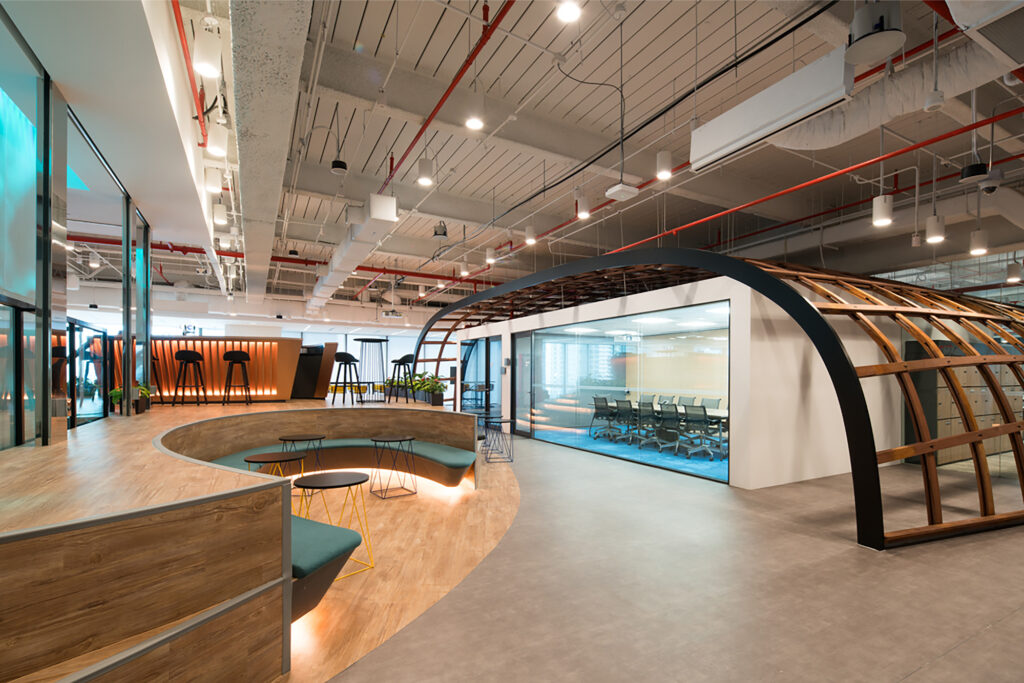An office is a place where diverse people come together for work from different cultures. To create a welcoming environment for the employees. It is crucial to design an office that promotes inclusivity and diversity. So that all employees can feel valued and empowered. An inclusive work environment manifests the workplace that respects and celebrates diversity.
Inclusive office design leads to productivity and efficiency of the employees. An inclusive and diverse office design ensures that everyone can do work with comfort without feeling isolated. office interior designers accommodate office design according to diverse perspectives and cultures. This approach fosters a diverse workforce. That helps the employees to feel included and valued.
Key principles of inclusive and diverse office design
In the contemporary world, the concept of inclusive and diverse office design has become essential. This approach is not only focused on respecting diverse cultures. But it also enhances productivity and job satisfaction. In this article, we explore the principles of inclusive and diverse office design.
Universal Accessibility
Universal Accessibility is one of the critical factors in inclusive office design. It involves creating spaces that are equally accessible to everyone. This ensures that physically challenged employees can also use the space without any obstacles. All areas should have facilities for wheelchairs, ramps and elevators. So that all employees can feel free and inclusive in the workplace. Moreover, the office is designed with adjustable furniture like ergonomic chairs and tables. So that all employees can fix their furniture according to their needs and feel comfortable during work hours. Restrooms are also accessible for all employees so that employees can work peacefully.
Cultural Sensitivity
Cultural sensitivity plays a critical role in Inclusive and diverse office design. It ensures that employees from different cultures and regions feel valued. Display diverse cultures through artwork, sculptures and paintings. Office design should have different zones according to the diverse needs of employees. Some employees feel comfortable, working in open spaces like collaborative zones. While some employees feel free in working quiet zones. Designing different zones in the office according to diverse needs helps boost their productivity.
Fostering Collaboration and Inclusivity
To encourage diversity, fostering collaboration and inclusivity is essential. It’s important for employees to feel free and inclusive in their workplace. So that they start conversations and share their diverse cultures and perspectives. To foster a friendly work environment, the office should design breakout spaces. Where employees meet and discuss their ideas, culture, and perspectives. Include a diverse group of employees in the design process. So that they can share information about their culture. So that the designer can install that in office design.
Prompting Mental Health and Well-Being
An inclusive and diverse office design also considers the mental health of employees. The mental health of an employee plays a vital role in their efficiency and productivity. To reduce stress, design an office with ergonomic elements. Install large glass windows for natural light that fills their mind with bright ideas. Place vertical green walls to maintain greenery and positivity. Use artwork that promotes mental health or has quotes for better health. Install a dedicated wellness room.
Technology and Digital Inclusivity
Technology plays a critical role in inclusive and diverse office design. Many offices use technology that supports remote working. In the affiliated world, the remote working method becomes an integral part of office work. The technology of digital communication includes e-mail, online meetings and presentations. Some employees prefer outdoor working so install all essential technology for outdoor working. The technology ensures the employee’s satisfaction and needs. Whether they want to do work remotely or in the office according to their comfort.
Adaptability for Future Needs
Inclusive and diverse office design means thinking ahead for further needs. Design an office in a way so that it can be used for diverse purposes. As well as the flexibility to accommodate the workplace. For instance, offices have to evolve for more workforce, so office design should have the flexibility to evolve. The office should meet all the requirements of employees. Consider factors of their age, gender, culture and religion. As we all know, technology is evolving rapidly, so the office should be ready to affiliate these elements.
Employee Involvement
The involvement of employees is the key to making an inclusive and diverse office design. Engage employees in office design to ensure that their perspective is valuable. This approach includes surveys, workshops and focus groups. So that they can know about their culture and their preferences. The involvement of employees in office design creates a work environment that reflects diverse needs. That ensures the satisfaction and productivity of employees.
Conclusion
Inclusive and diverse office design is not just a legal obligation that all should have to follow. It’s about creating a work environment where all employees can feel valued. The office should celebrate the diversity of different cultures and various perspectives. Anyone can make their office inclusive and diverse by implementing the above principles.
Providing an inclusive and diverse work environment fosters a collaborative, inclusive, productive workplace. This approach ensures that all employees feel valued in their diverse culture. This environment helps employees to feel free and inclusive and ensures all employees thrive.
